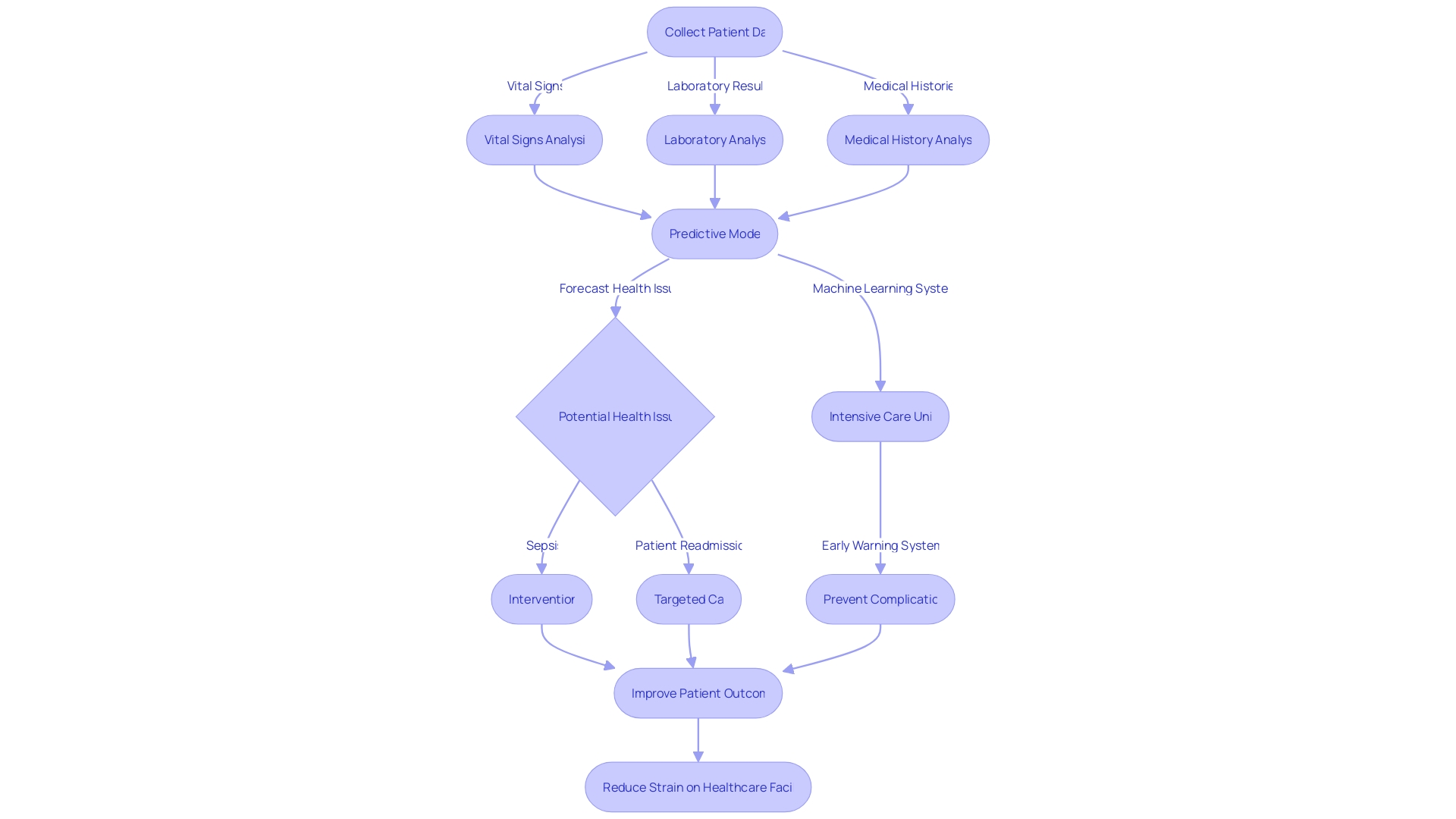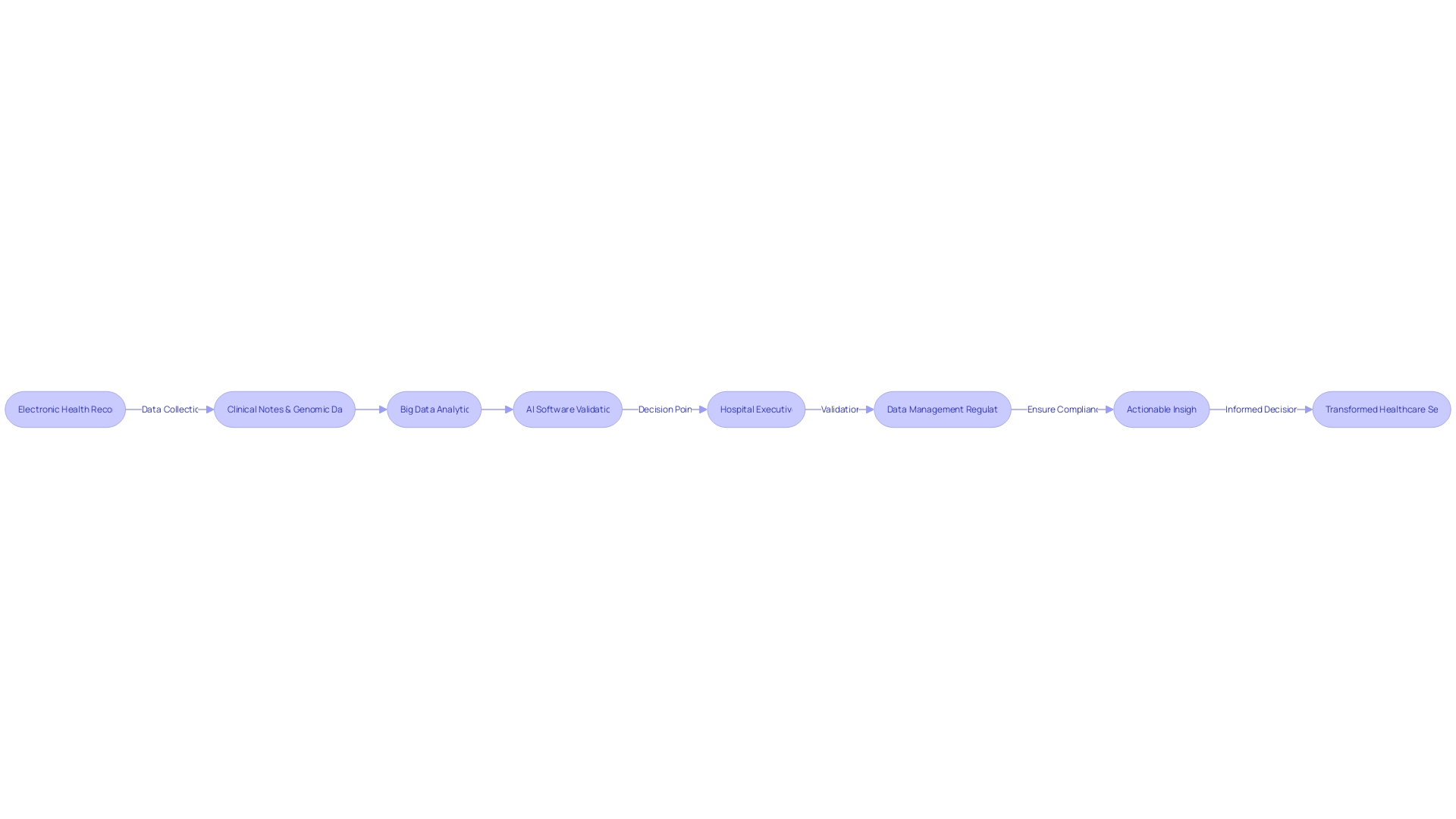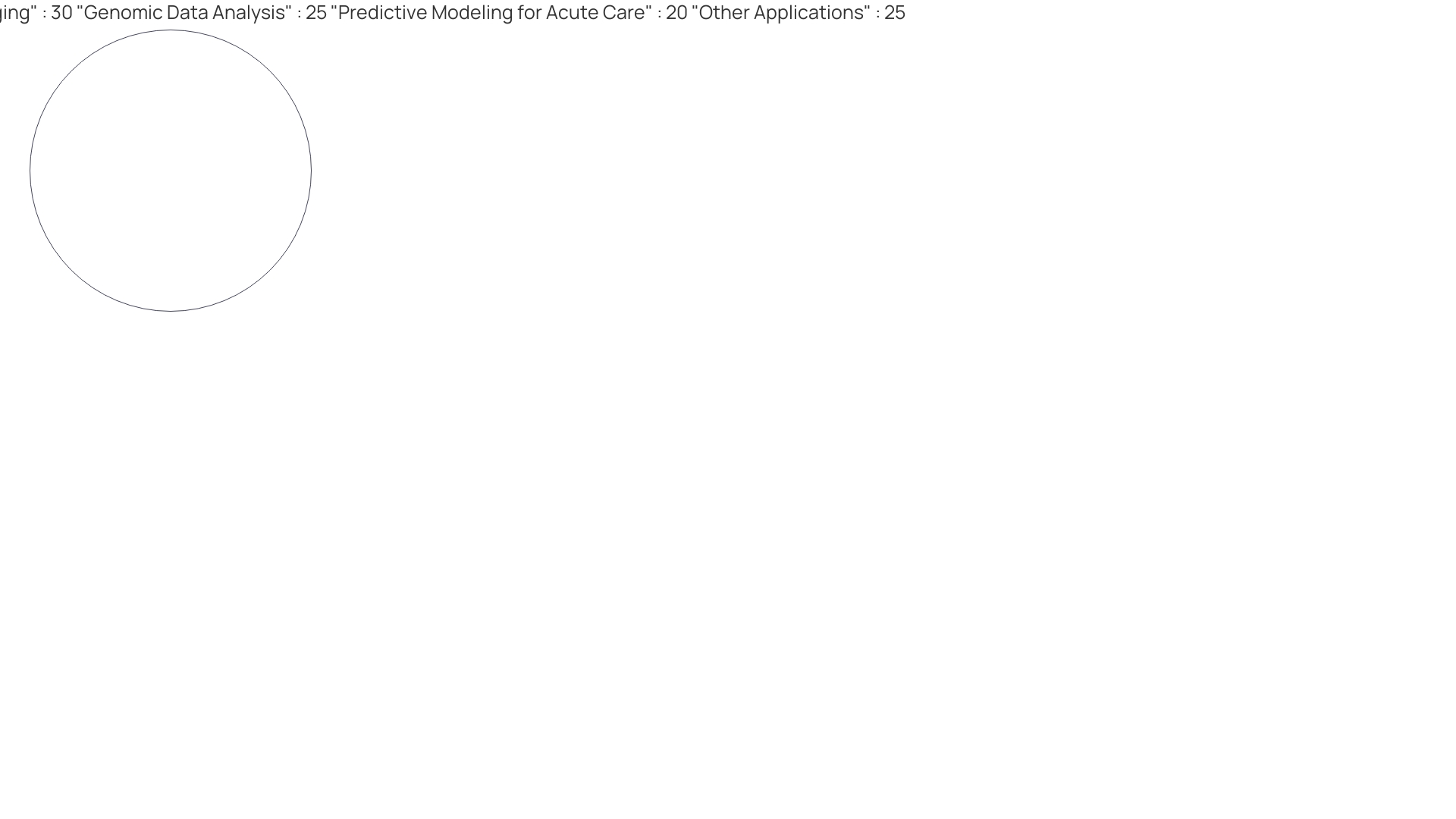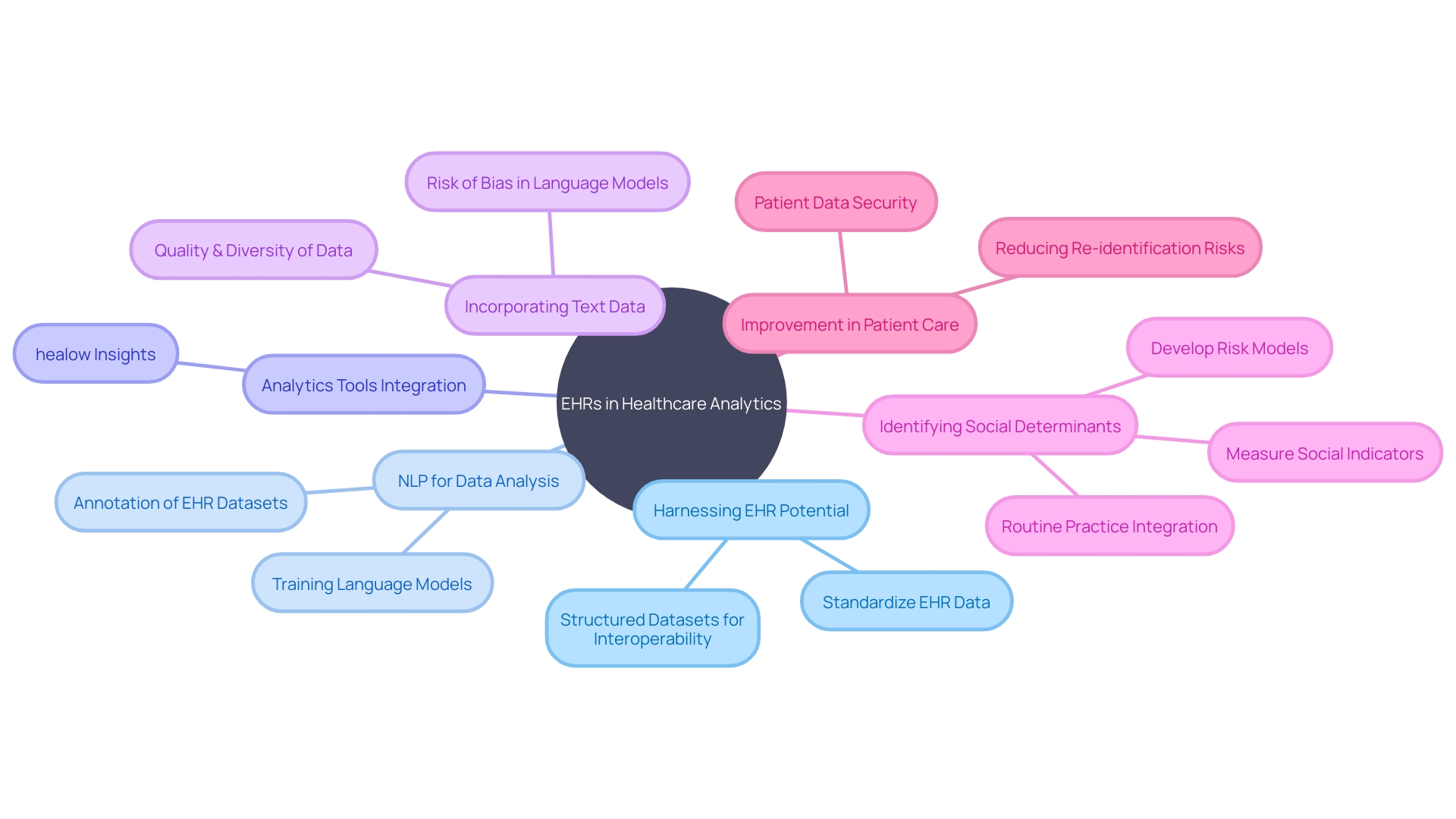Introduction
Predictive analytics is revolutionizing the healthcare industry by enabling professionals to anticipate and mitigate health risks before they escalate. This innovative approach sifts through vast datasets, such as electronic health records and medical device data, to pinpoint potential health issues and formulate personalized treatment plans. With high-precision forecasts generated in seconds, predictive analytics not only enhances patient outcomes but also streamlines the healthcare process.
By adopting AI and automation, healthcare professionals can focus more on patient care, leading to improved productivity, reduced costs, and superior care. In this article, we will explore the power of predictive analytics in healthcare, real-life examples of its applications, the role of big data in healthcare management and analysis, the impact of machine learning on information extraction and predictions, and a case study showcasing the use of AI and predictive analytics in a healthcare institution. Get ready to delve into the transformative potential of predictive analytics in healthcare.
The Power of Predictive Analytics in Healthcare
Harnessing the power of predictive analytics in healthcare, professionals are now able to foresee and mitigate health risks before they escalate into more severe conditions. This innovative approach is akin to our brain's natural tendency to avoid actions that have previously led to negative outcomes, such as abstaining from a food that has caused indigestion.
In the complex landscape of healthcare data, this same principle applies but requires sophisticated tools to handle the intricacy of medical histories and vast datasets. Predictive analytics sifts through electronic health records (EHRs), data from medical devices, and research studies to pinpoint potential health issues, allowing for early intervention and the formulation of personalized treatment plans.
The accuracy and speed of these predictive models are reshaping patient prognosis. Instead of manually combing through medical records—a process prone to errors—predictive analytics offers high-precision forecasts in mere seconds.
It's a game-changer that not only enhances patient outcomes but also streamlines the healthcare process. As Lee Schwamm of Yale School of Medicine indicates, the potential applications of predictive models in healthcare are extensive, from anticipating hospital readmissions to determining a patient's response to medication. Moreover, the adoption of AI and automation in administrative tasks promises significant efficiency gains, freeing healthcare professionals to focus on patient care. This technological advancement is poised to transform the healthcare industry by improving productivity, reducing costs, and ultimately delivering superior care, especially as the sector prepares to meet the demands of an aging population and the growing prevalence of chronic conditions.
Real-Life Examples of Predictive Analytics in Healthcare
Predictive analytics in healthcare is revolutionizing patient care by enabling medical professionals to anticipate and address potential health issues before they escalate. For instance, healthcare providers are now using predictive models to identify patients at heightened risk of developing sepsis.
By examining a wealth of patient data, such as vital signs, laboratory results, and medical histories, these models can forecast sepsis likelihood with impressive accuracy, facilitating prompt and potentially life-saving interventions. Another impactful application of predictive analytics is in the prediction of patient readmissions.
Hospitals are leveraging these insights to efficiently allocate resources and provide targeted care to minimize the chances of patients returning to the hospital. This not only improves patient outcomes but also reduces the operational strain on healthcare facilities.
The power of predictive analytics lies in its ability to sift through massive datasets from electronic health records, medical devices, and research studies at unprecedented speeds and with greater precision than traditional methods. This advanced approach to data analysis is providing clinicians with the foresight needed to preempt complications and improve the quality of healthcare delivery. Moreover, the integration of machine learning systems, particularly in intensive care units, is setting a new precedent for early warning systems that can alert to imminent complications like sepsis, despite the absence of a clinical gold standard for its early identification. The advancements in digital healthcare data, combined with increased processor speeds, have significantly enhanced the capabilities of these predictive models. The transformative potential of predictive analytics in healthcare is clear, and as these technologies continue to evolve, we can expect even more groundbreaking developments that will shape the future of healthcare, making it more proactive, efficient, and patient-centered.

Role of Big Data in Healthcare: Management, Analysis, and Future Prospects
The healthcare industry is on the brink of a transformation, powered by the surge in big data and the integration of advanced analytics. As healthcare data balloons, with electronic health records (EHRs), clinical notes, and genomic data becoming increasingly prolific, the ability to manage and analyze this information has never been more critical.
Through the meticulous application of big data analytics, healthcare providers can unearth actionable insights, discern patterns, and execute informed decisions that enhance patient care and streamline operations. In the context of such digital metamorphosis, South Korea's tertiary hospitals are pioneering this shift, embracing innovative digital overhauls that underscore the significance of managing burgeoning healthcare data volumes.
The country's legislative advancements, like the amendment of the Data 3 Act in 2020, have also laid a groundwork for the broader application of medical data, fostering an environment where pseudonymous patient information can be harnessed for public health benefits. However, this data deluge brings to the fore the necessity for robust data management regulations, particularly concerning the retention or destruction of medical records. There's a pressing need for hospital executives to actively participate in the clinical validation of AI software, ensuring that the technologies employed are not only innovative but also clinically sound and beneficial. As we navigate the Fourth Industrial Revolution, it's clear that if medical big data is systematically curated, accumulated, and astutely leveraged, it holds the promise of generating new value and propelling the healthcare sector into a new era of quality medical services.

Machine Learning for Information Extraction, Data Analysis, and Predictions
Advanced analytics in healthcare, empowered by machine learning, are revolutionizing the way we predict and treat illnesses. For instance, machine learning models are adept at parsing through massive amounts of data, including medical imaging, to spot early signs of diseases such as cancer.
These algorithms don't just stop at images; they extend their capabilities to genomic data analysis, enabling the identification of genetic markers for personalized medicine approaches. In a striking example, the Accelerated Capability Environment developed a proof of concept to predict Acute Kidney Injury (AKI) before it reaches a critical stage, potentially saving lives by ensuring timely dialysis in appropriate settings.
Similarly, Ronin's AI system forecasts the need for acute care with an impressive AUC of 0.84, surpassing earlier models that ranged between 0.61-0.85. This system, which aligns with clinical expectations, leverages data on prior healthcare utilization and the presence of pain to predict unplanned acute care usage.
Moreover, the increasing sophistication of telehealth and remote monitoring signifies a shift towards more comprehensive care outside traditional settings. With the expanding role of big data, healthcare decisions are becoming more data-driven, aiming to enhance patient outcomes and streamline operations. As these technologies evolve, strategic planning with a focus on cybersecurity and data privacy becomes paramount for healthcare executives. The integration of advanced analytics into healthcare decision-making processes is set to shape the future of the industry and improve the overall quality of patient care.

Extracting Information from EHR Datasets
Harnessing the potential of Electronic Health Records (EHRs) marks a significant advance in healthcare analytics. When EHRs are tapped effectively, they provide a trove of data ripe for analysis, which can lead to improved patient outcomes and operational efficiencies.
For instance, natural language processing (NLP) is a powerful tool that can sift through clinical notes and unstructured data, pinpointing crucial information like diagnoses and treatment plans. This not only aids in research but also enhances clinical decision-making and quality improvement efforts.
A case in point is Sun Life Health, a non-profit community health center that serves over 48,000 patients. They faced challenges in care gap numbers and cancer screenings.
By integrating healow Insights, they gained invaluable insights into patient needs and care gaps. This proactive approach not only streamlined IT operations but also boosted wellness visits and increased revenue, demonstrating the tangible benefits of advanced analytics in healthcare. Moreover, researchers have highlighted the importance of including text data in EHRs for tasks such as predicting surgical case durations. With advanced analytics, healthcare organizations can make strides in identifying social determinants of health, as described by Dr. Vest, who emphasizes the utility of NLP in measuring these factors efficiently. Such advancements in healthcare analytics exemplify the evolution of EHRs from mere repositories of information to dynamic tools that drive healthcare forward, ultimately leading to better patient care and improved health outcomes.

Case Study: Corewell Health’s Use of AI and Predictive Analytics
Harnessing the power of artificial intelligence (AI) and predictive analytics, healthcare institutions like Corewell Health are at the forefront of a medical revolution. With AI, Corewell Health can now pinpoint high-risk patients for chronic diseases earlier than ever before, allowing for timely interventions that prevent severe complications. The use of predictive models has not only streamlined resource distribution but also resulted in a marked decrease in hospital readmissions and a notable enhancement in patient satisfaction.
At the heart of this innovation is the ability to analyze complex patient data. For instance, by examining a multitude of patient records, healthcare providers are uncovering early indicators of diseases such as diabetes, enabling them to advise preemptive lifestyle adjustments. This approach to healthcare is not isolated to Corewell; hospitals globally are developing similar analytics for diseases ranging from COPD to breast cancer.
Moreover, the integration of AI into daily medical practice is expected to significantly reduce healthcare costs while improving accessibility. Algorithms capable of mimicking the top echelon of medical experts are now a reality, with some matching the accuracy of the top 25% of physicians in diagnosing conditions. The potential of AI in healthcare is vast, and as it continues to evolve, it promises to transform the landscape of patient care by enhancing diagnosis, treatment, and overall health system efficiency.
Conclusion
Predictive analytics is revolutionizing healthcare by enabling professionals to anticipate and mitigate health risks, improving patient outcomes and streamlining the healthcare process. Real-life examples highlight its power in identifying high-risk patients and predicting readmissions. Machine learning systems enhance early warning systems and personalized medicine approaches.
Big data plays a crucial role in managing and analyzing healthcare information, unearthing actionable insights. Machine learning algorithms revolutionize information extraction, data analysis, and predictions, enabling early disease detection and improved patient care. Harnessing the potential of Electronic Health Records (EHRs) through advanced analytics improves patient outcomes and operational efficiencies.
The case study on Corewell Health showcases the power of AI and predictive analytics in identifying high-risk patients earlier, resulting in improved outcomes. In summary, predictive analytics has transformative potential in healthcare, enhancing patient outcomes, streamlining operations, and improving care quality. The integration of AI, machine learning, big data analytics, and advanced technologies will continue shaping a proactive, efficient, and patient-centered future for healthcare.





